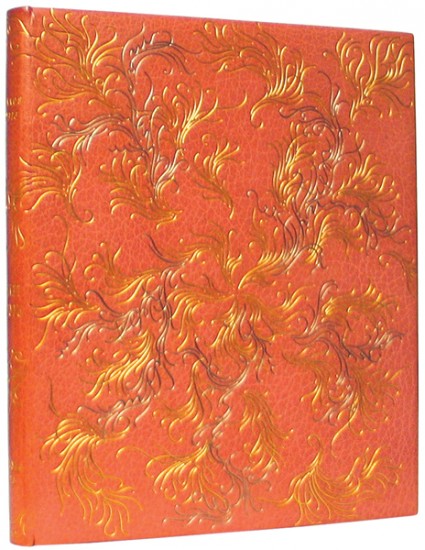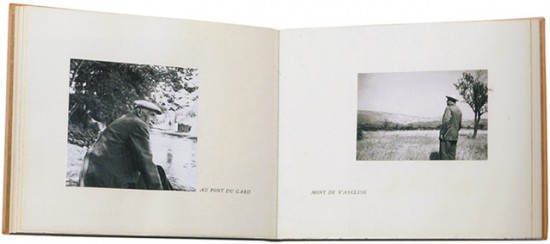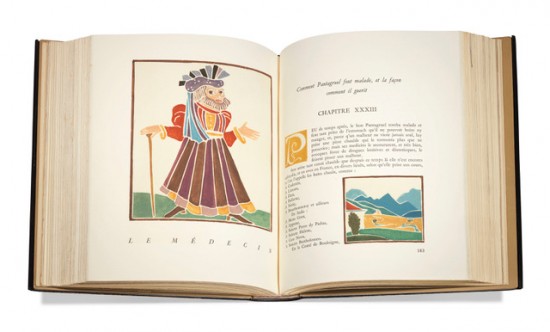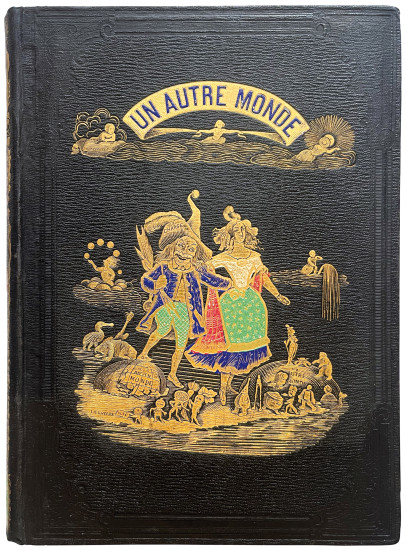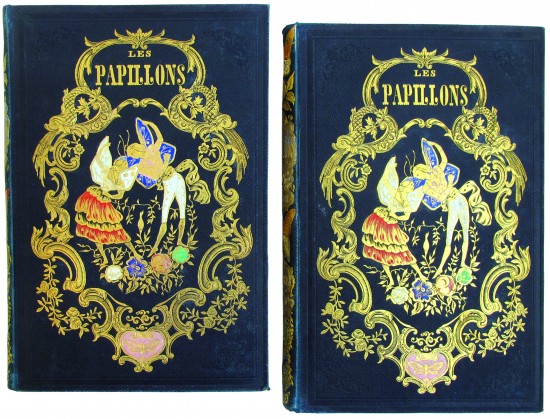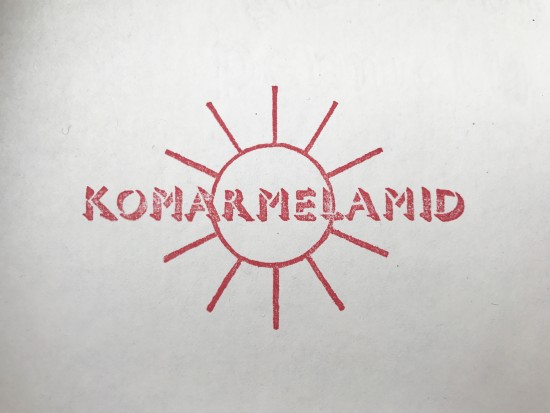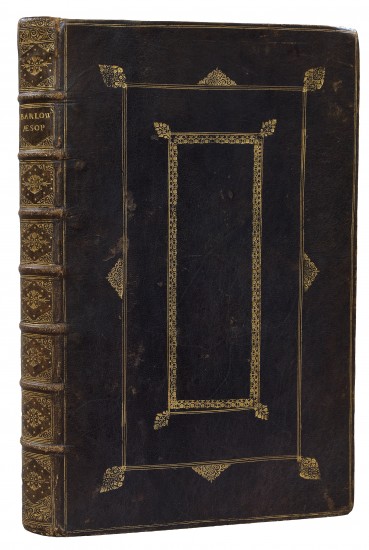Parallèlement
Bonnard. Verlaine, P[aul]
Paris. Imprimerie Nationale / Ambroise Vollard Editeur. 1900
Sold
Pierre Bonnard' masterpiece of illustration in a stunning binding by Paul Bonet.
From the edition limited to 200 copies, with this one of 191 on Holland wove paper (one of 21 hors commerce copies).
Also included is a letter from Paul Bonet (presumably to the original owner who commissioned Bonet's binding), on his headed notepaper, discussing the binding: 'Reliure de la série 'dentelles'; son décor est établi à partir d'un centre légèrement surélevé, il est construit sur un rythme de répétitions par cinq et composé de motifs en fers or - s'incorporant dans cette drame, qui assure l;équilibre de la composition; d'autres motifs en fers palladium déroulent librement leus arabesques.'
This copy with the small vignette by Bonnard for the cover and title page in place of the vignette of the Imprimerie Nationale as well as the original lithograph by Bonnard that replaced the privilège of the Garde des Sceaux, all of which were altered when it was perceived that the book was not a mathematical text.
'An epoch-making book ...'. (The Artist & the Book 1860 - 1960).
'It is hardly surprising that Ambroise Vollard thought of Bonnard to illustrate Verlaine's Parallèlement. He knew already the artist's drawings for Marie; and he had seen the painting Indolence, a drawing of which is actually included in this work ... Bonnard invented a very free style of composition to complement Verlaine's poems; the lithographs stray into and around the verses themselves and curve out again into the margins, voluptuous and tender images whose powers of suggestion miraculously enhance the poet's art.' (Pierre Bonnard, Gallimard).
'Vollard who was the friend of all the best painters of his day, spared nothing in his efforts to publish Verlaine's Parallèlement in a magnificent edition: an imposing format, impressive lithographs, the large and elegant Garamond italic type, recently recast by the Imprimerie Nationale; and finally, the prominent role played by the illustrations. On each page, the tender and sensual lithographs ... overflow their bounderies and pour into the margins, pink as the early light of morning, marking indelibly the dawn of the twentieth century in the history of the printed book.' (Guignard, Le Livre, 1942).
[Bouvet 73; From Manet to Hockney 17; Logan 11; The Artist & the Book 27; Castleman pp. 86/7].
From the edition limited to 200 copies, with this one of 191 on Holland wove paper (one of 21 hors commerce copies).
Also included is a letter from Paul Bonet (presumably to the original owner who commissioned Bonet's binding), on his headed notepaper, discussing the binding: 'Reliure de la série 'dentelles'; son décor est établi à partir d'un centre légèrement surélevé, il est construit sur un rythme de répétitions par cinq et composé de motifs en fers or - s'incorporant dans cette drame, qui assure l;équilibre de la composition; d'autres motifs en fers palladium déroulent librement leus arabesques.'
This copy with the small vignette by Bonnard for the cover and title page in place of the vignette of the Imprimerie Nationale as well as the original lithograph by Bonnard that replaced the privilège of the Garde des Sceaux, all of which were altered when it was perceived that the book was not a mathematical text.
'An epoch-making book ...'. (The Artist & the Book 1860 - 1960).
'It is hardly surprising that Ambroise Vollard thought of Bonnard to illustrate Verlaine's Parallèlement. He knew already the artist's drawings for Marie; and he had seen the painting Indolence, a drawing of which is actually included in this work ... Bonnard invented a very free style of composition to complement Verlaine's poems; the lithographs stray into and around the verses themselves and curve out again into the margins, voluptuous and tender images whose powers of suggestion miraculously enhance the poet's art.' (Pierre Bonnard, Gallimard).
'Vollard who was the friend of all the best painters of his day, spared nothing in his efforts to publish Verlaine's Parallèlement in a magnificent edition: an imposing format, impressive lithographs, the large and elegant Garamond italic type, recently recast by the Imprimerie Nationale; and finally, the prominent role played by the illustrations. On each page, the tender and sensual lithographs ... overflow their bounderies and pour into the margins, pink as the early light of morning, marking indelibly the dawn of the twentieth century in the history of the printed book.' (Guignard, Le Livre, 1942).
[Bouvet 73; From Manet to Hockney 17; Logan 11; The Artist & the Book 27; Castleman pp. 86/7].
4to. Illustrated with 109 original lithographs printed in rose and 9 wood-cuts after Bonnard printed in black. Full rose crushed morocco by Paul Bonet with his signature gilt and dated 1960, boards with elaborate gilt and argent tooling to form elaborate decorative scheme, turn-ins of pink calf, grey suede endpapers, original wrappers retained, a.e.g., matching chemise and slipcase.
#40125
